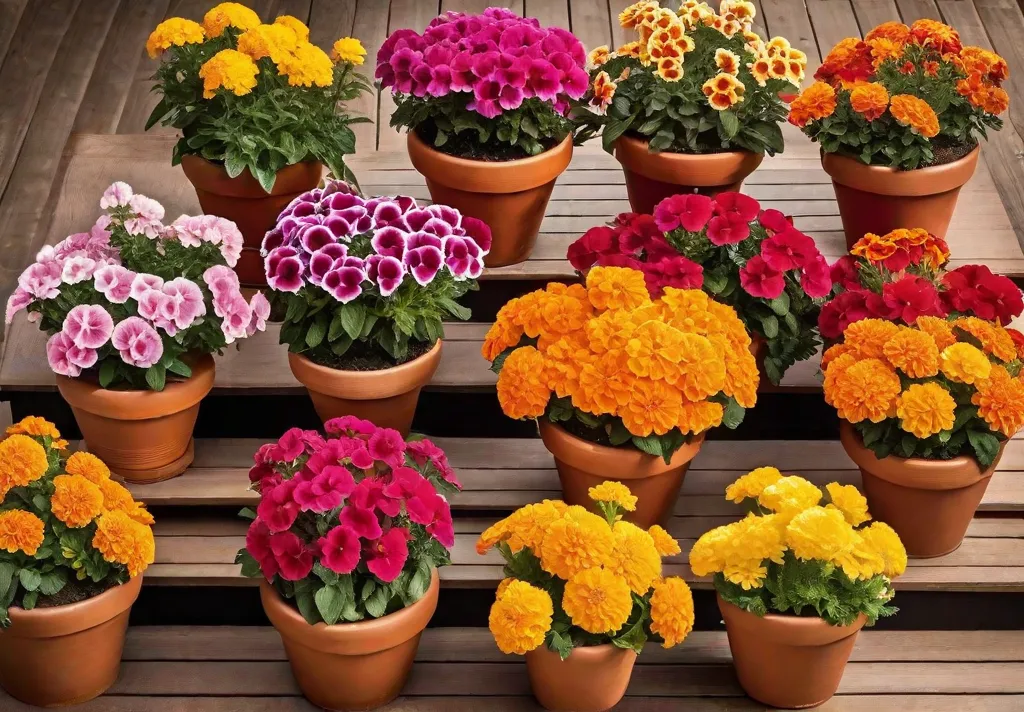Have you ever walked past a beautiful flower garden and felt a sense of envy? Those vibrant colors, delicate textures, and sweet fragrances seem almost magical. But the truth is, creating a stunning flower garden doesn’t require any sorcery – just some simple know-how.
Even if you’re a total gardening novice, these 11 easy flower garden ideas will help you transform any outdoor space into a blooming paradise. With some planning and care, you’ll enjoy your floral oasis in no time. So, let’s get started!
Selecting the Right Spot
The first step to flower garden success is choosing the perfect location. Most flowers thrive in sunny spots with well-drained soil. Here’s what to look for:
- Sunlight: Check how many hours of direct sun the area receives daily. Full sun (6+ hours) is ideal for sun-loving flowers like zinnias and marigolds. Partial shade (4-6 hours) suits shade-tolerant varieties like impatiens.
- Soil Quality: Dig down and examine the soil texture. Loose, crumbly soil that drains well is perfect. If it’s too dense or clay-like, add compost or other organic matter to improve drainage.
- Drainage Test: Dig a hole about 12 inches deep and fill it with water. Drainage may be an issue if the water is still there after 24 hours. Consider raised beds in this case.
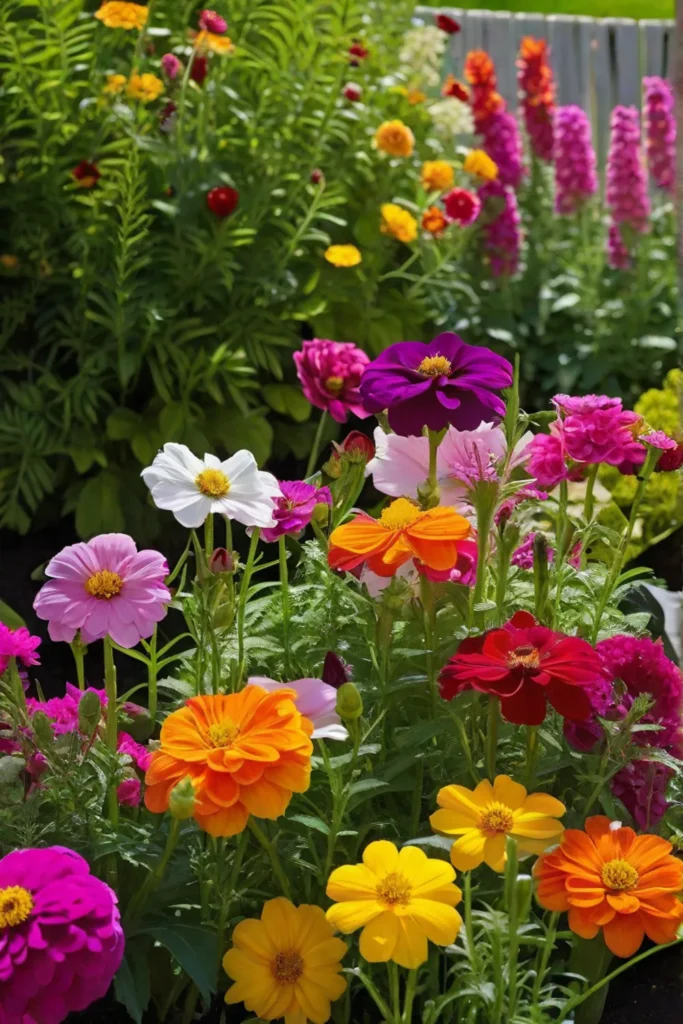
Don’t worry if your yard isn’t perfect – a few simple adjustments can make almost any spot garden-ready.
Starting with Easy-to-Grow Flowers
As a beginner, it’s wise to start with flowers, which are low-maintenance and hardy. These varieties practically grow themselves:
- Sunflowers: Tall, cheery, and oh-so-easy! Sunflowers thrive in full sun and well-drained soil.
- Marigolds: Vibrant marigolds not only look beautiful but also help deter pests. They love sunshine and good drainage.
- Pansies: With their friendly “faces,” pansies add instant charm. They prefer cooler temps and partial shade.
- Petunias: Trailing petunias are perfect for containers and baskets. Give them full sun to partial shade.
- Zinnias: Zinnias bloom abundantly in summer’s heat when given full sun and well-drained soil.

Start with one or two varieties while you get the hang of things. With their low-fuss care, you’ll be a pro in no time!
Utilizing Pots and Containers
Need more yard space? No problem! Pots and containers let you grow a flower garden about anywhere – decks, patios, even balconies. Here are some tips:
- Choose the Right Size: Bigger is better when it comes to containers. Larger pots provide more space for roots and water retention.
- Ensure Proper Drainage: Containers must have drainage holes to prevent soggy soil that can lead to root rot.
- Try Container-Friendly Flowers: Petunias, impatiens, marigolds, and geraniums all thrive in pots. Stick to compact varieties for smaller containers.
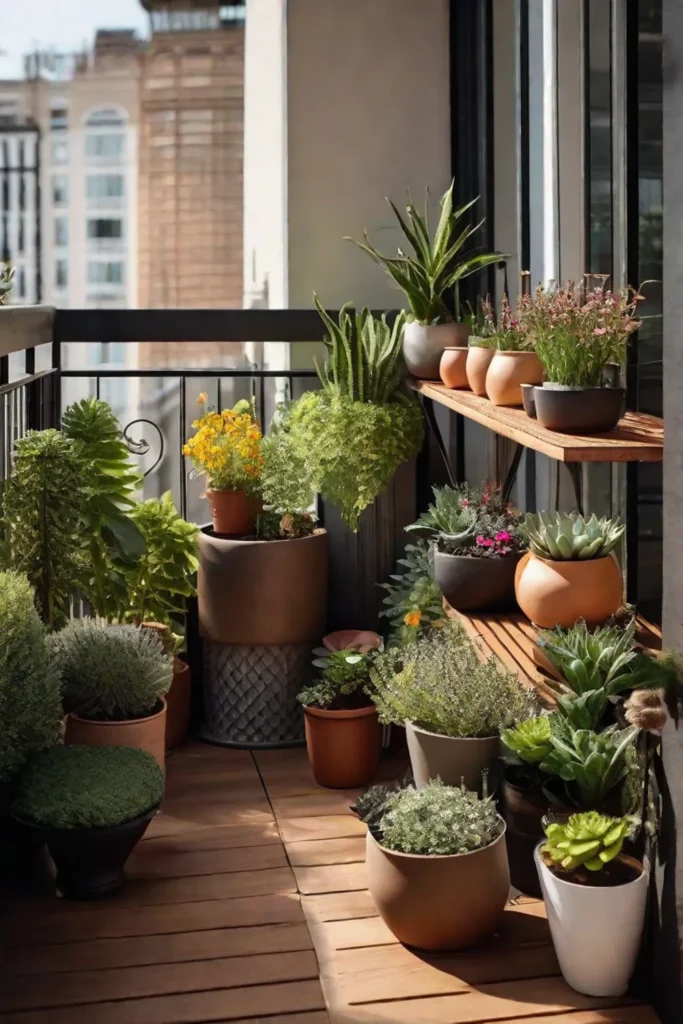
You can get creative with placement, colors, and arrangements with containers. Group different sizes together for visual interest. Best of all, you can move them around to follow the sun!
Incorporating Perennials for Long-Term Planning
While annuals provide a burst of color for one season, perennials return year after year. Including some perennials in your garden provides long-lasting beauty with less replanting required. Great low-maintenance options include:
- Daylilies: These sun-lovers bloom continuously with minimal care.
- Coneflowers: The purple daisies of coneflowers attract pollinators to the garden.
- Hostas: Lush hostas add texture with their broad leaves and can tolerate some shade.
- Salvia: From bright red to deep purple, salvia offers endless color for sunny spots.

In cold climates, perennials need some winter prep, like cutting back dead growth and applying mulch. But overall, they’re a low-effort way to ensure recurring blooms.
Implementing Mulch for Weed Control and Moisture
One of the easiest ways to simplify garden maintenance? Use mulch! A 2-3 inch layer of mulch does double duty:
- Weed Suppression: Mulch blocks weeds from germinating by depriving them of sunlight.
- Moisture Retention: Mulch insulates the soil, reducing water evaporation.
Organic mulches like bark chips, shredded leaves, or compost work well for flower beds. Spread mulch evenly, avoiding direct contact with plant stems.

Replenish mulch as needed to maintain that protective layer. Your garden will look tidy while requiring less weeding and watering. It’s a win-win!
Creating a Blooming Schedule
Simple planning allows you to enjoy non-stop blooms from spring through fall. The secret? Choose flowers with different bloom times and plant in succession.
For example, start with spring bulbs like tulips and daffodils. Then, follow up with summer annuals like petunias and zinnias. Finally, add fall bloomers like mums and asters.
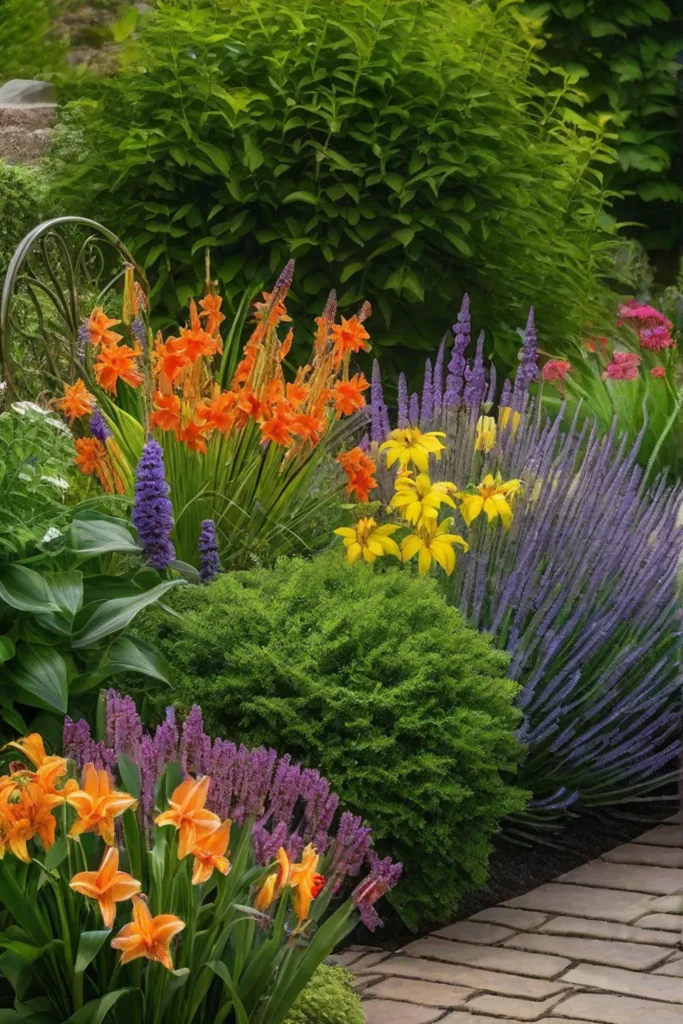
Staggering your planting every few weeks ensures a constant rotation of fresh flowers. Keep a primary bloom calendar handy to help map out your schedule.
Attracting Pollinators
Want to take your flower garden to the next level? Invite some pollinator pals like bees, butterflies, and hummingbirds! They are fun to watch, and pollinators help plants produce more blooms.
Grow a variety of native wildflowers, which pollinators are naturally drawn to. Or try other nectar-rich favorites like:
- For Bees: Sunflowers, lavender, zinnias
- For Butterflies: Lantana, verbena, coneflowers
- For Hummingbirds: Fuchsias, salvias, honeysuckle

Provide a shallow water source and leave some leaf litter for nesting materials. Your garden will soon be a pollinator’s paradise!
Watering Wisely
While flowers need adequate water to thrive, overwatering can be just as detrimental as underwatering. Aim to keep the soil consistently moist but not soaked.
- Signs of Underwatering: Wilting, crispy leaves, and dry soil
- Signs of Overwatering: Yellowing leaves, soggy soil, and rot
A good rule of thumb is to water deeply once or twice a week, allowing the soil to dry partially between waterings. This encourages more profound root growth.
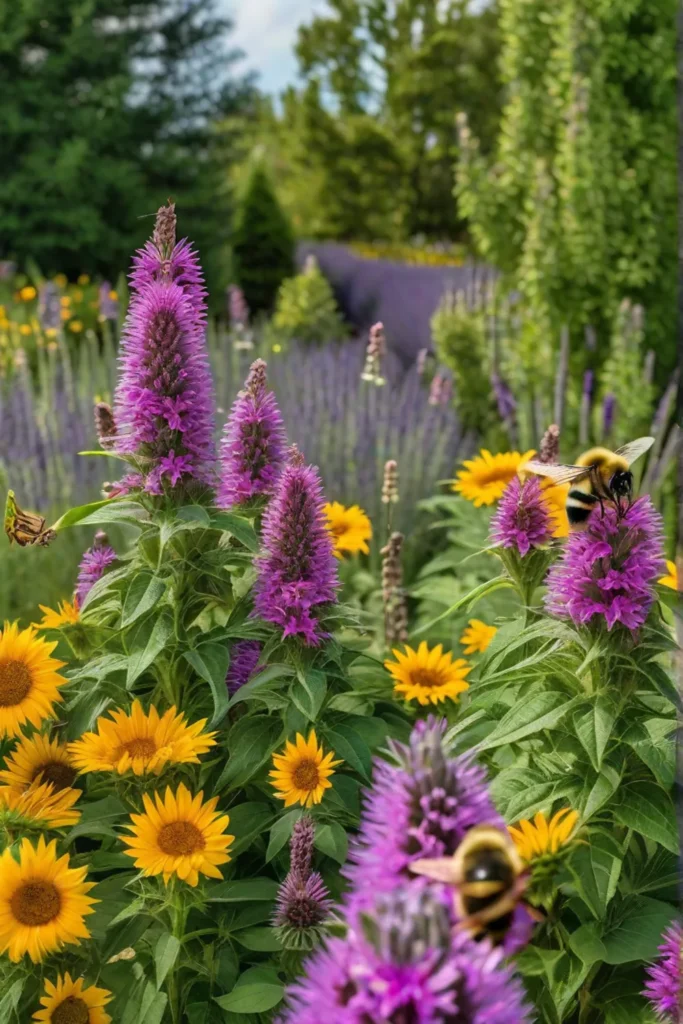
For hassle-free watering, consider a drip irrigation system. It delivers water directly to roots while minimizing evaporation.
Fertilizing Fundamentals
Like any living thing, flowers need nutrients to flourish. But over-fertilizing can burn plants. The key is to feed them just the right amount.
A balanced, all-purpose fertilizer is perfect for beginners. Organic options like compost or manure work great, too. Sprinkle fertilizer around each plant and water it in.
As a general guideline, fertilize every 4-6 weeks during the active growing season. Avoid fertilizing when plants are dormant or in extreme heat.
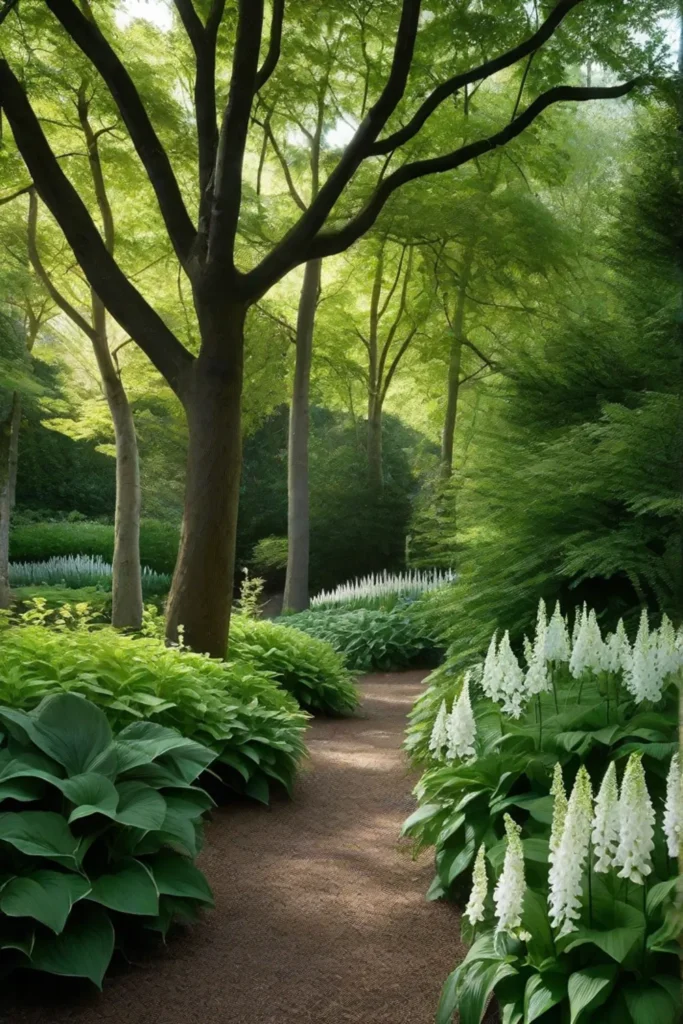
Regular Maintenance and Care
While flower gardens require routine care, it’s easy for beginners. Just follow these simple steps:
- Deadheading: Remove spent blooms to encourage more flowering.
- Pruning: Trim off dead or overcrowded stems to improve airflow.
- Pest Monitoring: Check plants regularly for signs of insects or disease. Act quickly at the first sign of trouble.
- Watering: As mentioned, proper watering is crucial. Use your finger to check soil moisture levels.
- Fertilizing: Feed plants every 4-6 weeks with a balanced fertilizer during the growing season.
Most importantly? Be patient and observant. Over time, you’ll get to know your plants’ needs. Keeping a simple garden journal can help track care and bloom cycles.
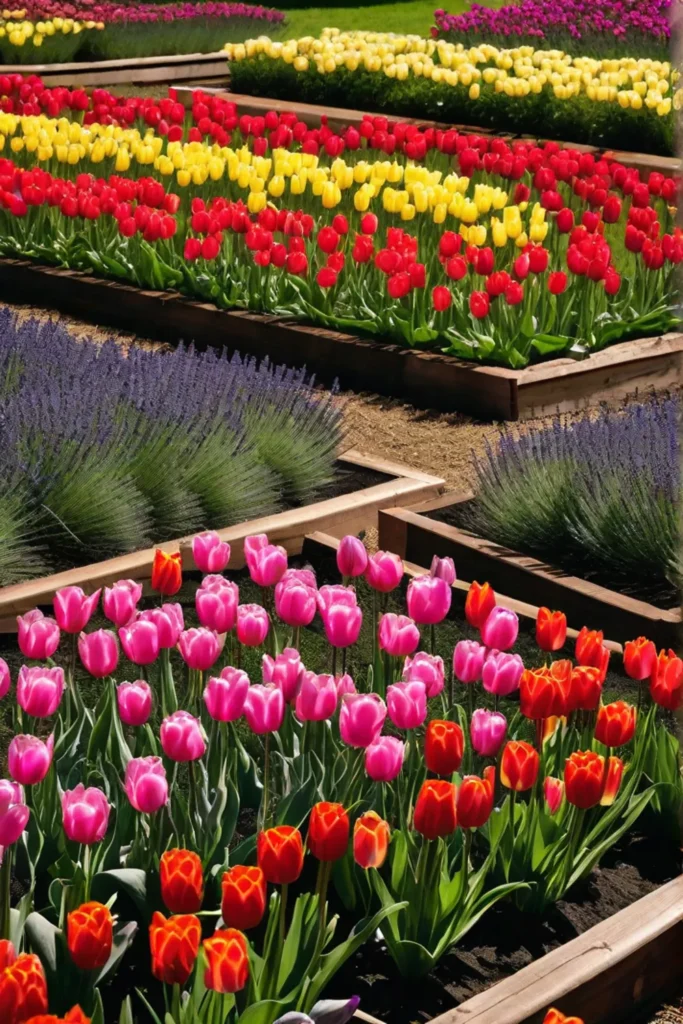
Conclusion
See, creating a stunning flower garden is more manageable than it seems! You’ll be well on your way by starting small with low-maintenance varieties and using simple techniques.
So pick a sunny spot, grab some easy-to-grow flowers, and have fun getting your hands dirty. With a bit of care and attention, those first few blooms will multiply into an eye-catching floral display.
Feel free to experiment and find what works for you. Gardening is as much an art as a science. The most important thing is to enjoy the process of nurturing your own little patch of paradise.
Now it’s your turn! Share your beginner gardening plans, stories, or questions in the comments below. Let’s build a community of flower enthusiasts supporting each other along this blossoming journey.
